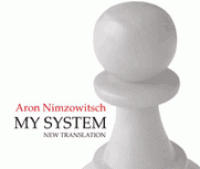Basic Endings: Rook vs Knight
![]() vs
vs ![]()
This is one of the 100 endgame you must know, says GM Jesus de la Villa. It was also the subject of the first recorded chess endgame study by Al-Aldi in 842 AD.
I. Evaluation & Principles
- 71% draws.
- Usually won if the knight ventures away from his king's protection.
- Usually won if the knight's in a corrner (red zone).
- Winning chances with a knight on the rim (yellow zone1).

II. Technique
While the above will help you determine whether to enter a rook vs knight endgame, you need to know more to actually play it well. Read on to learn more. :)
Trapping a Separated Knight
1.Rd8! confines the knight, the first step towards winning it. Finishing off the knight is straight-forward: 1...Nc1 2.Rd2 Nb3 3.Rd1 or 1...Na1 2.Rd2 Nb3 3.Rd1.2
Surviving on the Rim
White's knight prevents the Black king from occupying d6, e6, or f6. If the rook attacks on the eighth rank, White can survive by escaping via the e7 flight square.
More Complicated Cases
These examples may mislead you into believing this ending is simple. Nothing could be further from the truth. Even super-GMs can goof, and amateur games are often comedies of errors.
As you play over the above game, can you spot all the mistakes? Every ?? indicates one side blundered so badly the result changed from won to drawn or vice-versa.
III. Mastery
"This time, let go your conscious self and act on instinct." -- Obi-Wan Kenobi

When your clock is down to 5 seconds/move, it's not enough to know the winning technique. You must be able to play on instinct, as smoothly as you swim or ride a bike. Once you reach this level of mastery, you never forget. You've never forgotten how to swim, have you? 3
GM Yasser Seirawan learned this endgame by playing a simple game. He put only a white rook, white king, and black knight on the board. He then moved the White pieces and Black pieces in turn (Black is allowed to pass!) and saw how quickly he could hunt down the knight.
Play this for a few minutes a day for the next month. :)
Footnotes
1 - Specifically, if the knight's in the red zone it can be immediately trapped by either the king or rook. If the knight's in the yellow zone it can be trapped by the king and rook together. I find this a useful way to gauge the relative danger of squares.
2 - This position arises in a line from the Al-Aldi 842 AD endgame study.
3 - For the scientifically inclined, It's stored in your procedural memory. Experimental evidence proves this knowledge even survives many forms of amnesia.






